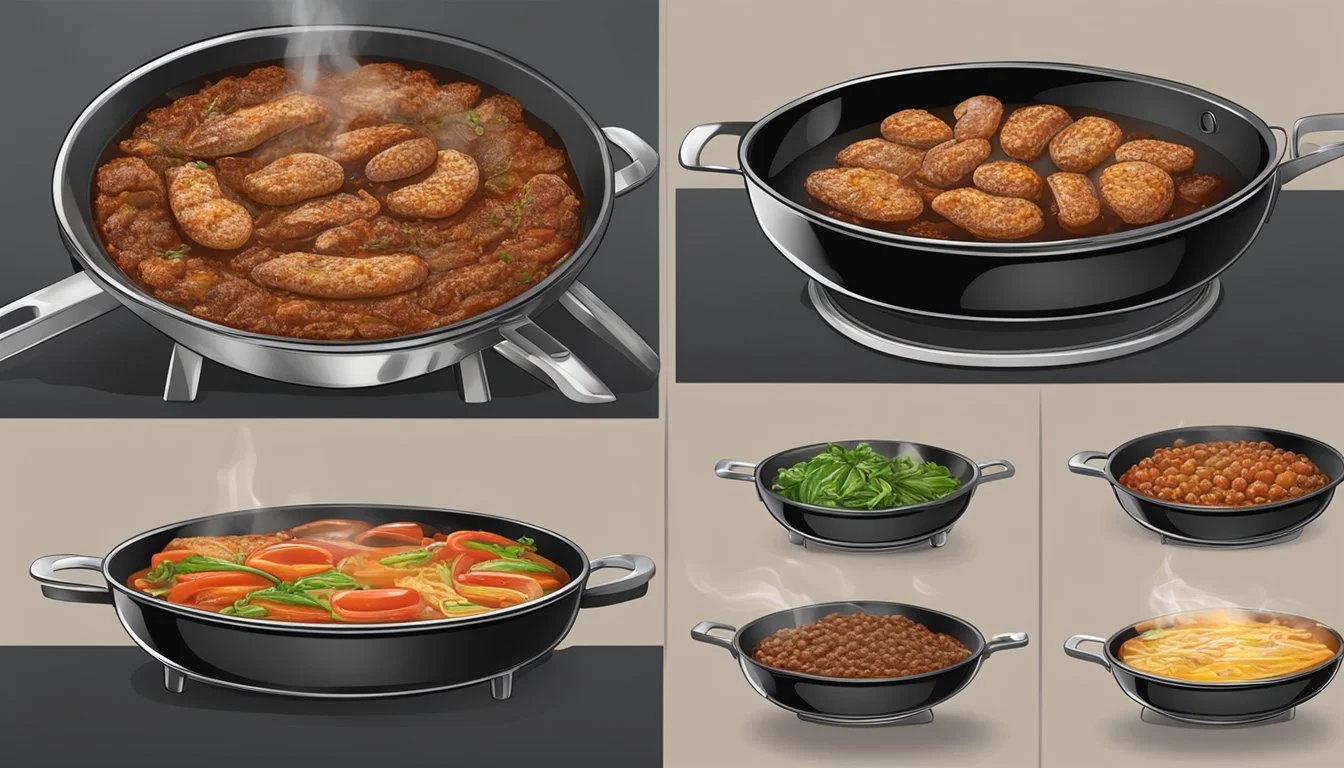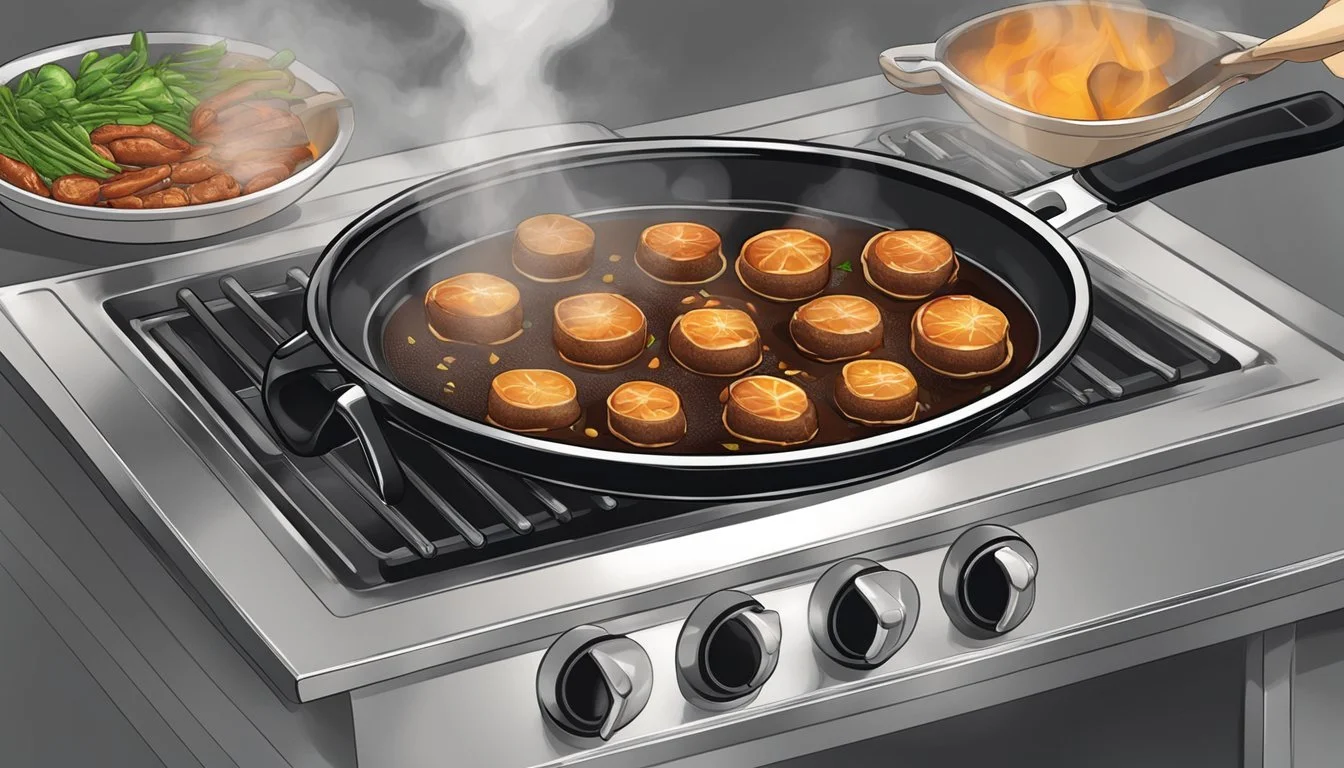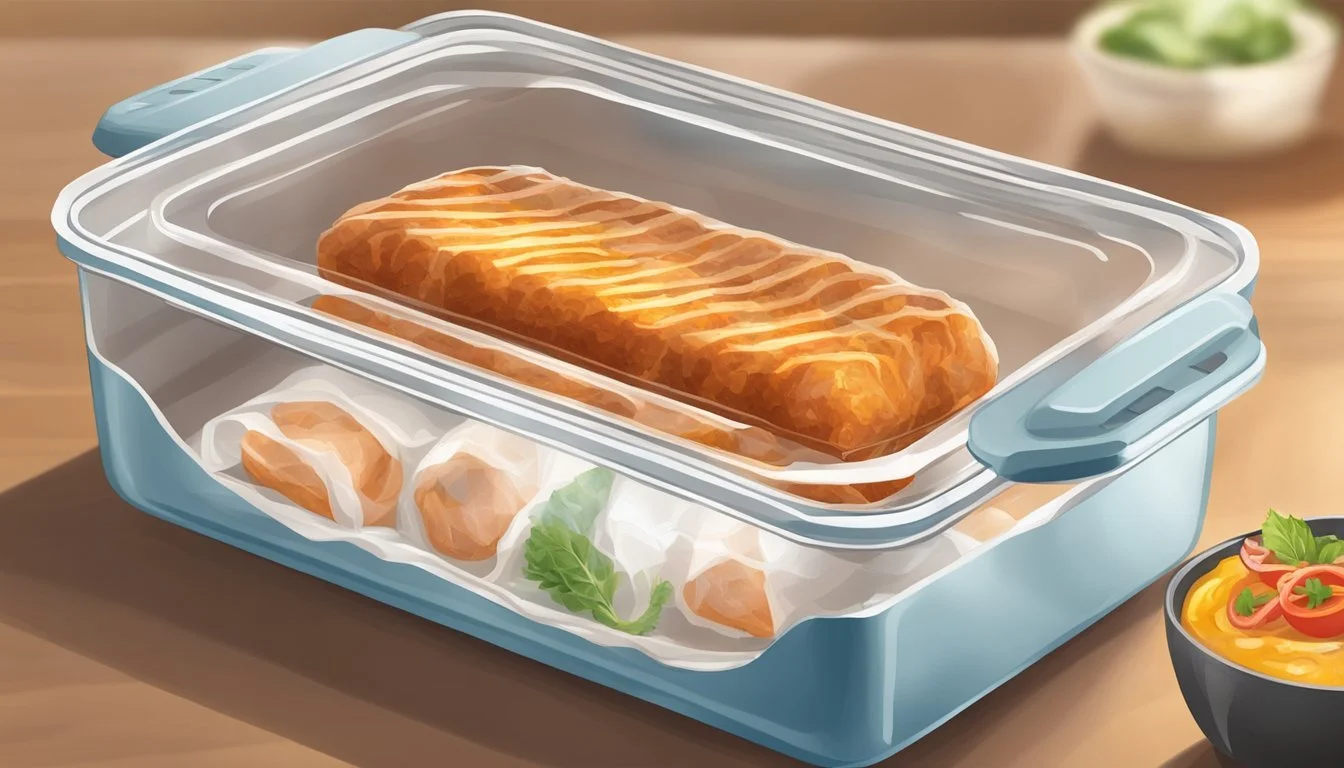Best Way to Reheat Longaniza
Ensuring Flavorful, Juicy Results Every Time
Longaniza, a flavorful sausage with roots in Spanish cuisine, enjoys popularity in various forms across the globe. Known for its bold spices and garlic-rich flavor, it's a staple in many dishes, and when cooked properly, longaniza has a juicy, succulent texture. However, reheating it poses a challenge, as the sausage is prone to drying out, which can detract from its palatability.
Careful reheating methods can preserve the taste and texture of longaniza, ensuring it remains just as enjoyable as when it was freshly cooked. The key lies in gentle heat application and moisture retention. Through recommended culinary practices, the sausage's inherent flavors and juices are retained, making reheated longaniza a delightful experience akin to its initial serving.
Understanding Longaniza
Longaniza is a sausage celebrated for its distinctive taste and texture. Each variety is a testament to the culinary traditions it represents, with a depth of flavor and succulence that can elevate any meal.
Fundamentals of Longaniza Flavor and Texture
Longaniza is characteristically rich in flavors, attributed to a blend of spices such as garlic, aniseed, and paprika. This sausage often includes vinegar, which not only imparts a unique tang but also tenderizes the meat. The flavor profile can be complex with hints of nutmeg and cinnamon, depending on the regional recipe.
Texture-wise, longaniza can either be coarse or finely textured, reflecting the method in which the meat, be it beef, pork, or a mix, is prepared. Typically, the meat is chopped rather than ground, lending a more rustic mouthfeel to the sausage. Fat content is crucial in achieving the desired juiciness and tenderness, as it melts during cooking, basting the meat from within.
It's noteworthy that the balance of meat and fat, as well as the combination of spices, create a symphony of flavors that are retained during careful reheating, ensuring that the longaniza remains juicy and enjoyable to the last bite.
Preparation for Reheating
To maintain the longaniza's flavor and juiciness during reheating, careful preparation is essential. The preparation involves properly thawing the longaniza if it's been stored in the freezer and slicing it to ensure even reheating.
Thawing and Bringing to Room Temperature
If the longaniza is frozen, it should first be moved from the freezer to the refrigerator to thaw gradually; this process can take several hours or overnight, depending on the quantity. Once thawed, the longaniza should rest out of the refrigerator until it reaches room temperature. Allowing the longaniza to come to room temperature before reheating is a critical step to ensure that it heats evenly and maintains its flavor.
Slicing Techniques for Even Heating
For a consistent reheating process, the longaniza should be sliced into pieces of equal thickness. Uniform slicing allows for even heat distribution, reducing the risk of overcooked edges or an underheated center. The recommended thickness is approximately:
Type of Slice Thickness Coins 1/4 inch Diagonal slices 1/2 inch
Slicing the longaniza while it's still slightly firm can make it easier to achieve uniform pieces. Even heating is essential for preserving the sausage's internal moisture and rich flavor profile.
Reheating Methods
When reheating longaniza, one aims to preserve its delectable flavors and juiciness. Selecting the correct reheating method is crucial in achieving this goal by maintaining an even internal temperature and preventing the sausage from drying out.
Oven Reheating Technique
For the oven method, preheat the oven to 250 degrees Fahrenheit. Place the longaniza on a baking sheet and cover it with aluminum foil to trap in steam and moisture. Reheat for about 10-15 minutes, using a thermometer to confirm that the internal temperature has reached at least 165 degrees Fahrenheit.
Stovetop Reheating Approach
To reheat longaniza on the stovetop, one should use a medium heat setting. Heat a skillet and add a few tablespoons of water to create steam, which helps to keep the sausage moist while reheating. Place the longaniza in the skillet, turning it occasionally until it reaches the desired temperature.
Microwave Method for Quick Reheating
For those short on time, the microwave can be used to reheat longaniza efficiently. Wrap the sausage in a damp paper towel to keep in moisture, then microwave on medium power in short intervals of 30-60 seconds, checking the warmth and moisture level to avoid overcooking.
Utilizing the Air Fryer for Reheating
An air fryer offers a rapid and effective means of reheating. Preheat the air fryer to 250 degrees Fahrenheit to safeguard the sausage's texture. Wrap the longaniza in foil or place it in the air fryer basket and heat for about 4-6 minutes. Be sure to check the temperature with a thermometer to ensure it's thoroughly heated.
Maintaining Moisture and Flavor
Proper reheating of longaniza is essential to maintain its moisture and flavor. Using specific methods to reheat can help retain the juicy interior and savory taste that makes this sausage a beloved dish.
Protective Wrapping and Steaming Methods
To keep longaniza moist during reheating, one should use protective wrapping in the form of aluminum foil or parchment paper. This wrapping acts as a barrier, trapping moisture and heat that steams the sausage gently. For an added boost in flavor and moisture, introducing a small amount of liquid like beef broth or water into the wrap can create a steamy environment that infuses the meat without diluting its intrinsic flavors. A steam bath can be employed by placing the wrapped longaniza over boiling water, making sure that the sausage does not come into direct contact with the water.
Steps for Protective Wrapping:
Wrap longaniza in aluminum foil or parchment paper.
Add a tablespoon of liquid (beef broth, water, or au jus).
Place over steam bath if the oven method isn't used.
Adding Liquids to Enhance Juiciness
Incorporating liquids such as olive oil, butter, or gravy can not only prevent dryness but also enhance the longaniza's flavor profile. When reheating in an oven or on the stovetop, lightly brush the sausage with olive oil or top it with a pat of butter to introduce additional fat, which can help retain moisture and create a more succulent texture. Alternatively, one can gently reheat the longaniza in a small amount of broth or gravy, which not only keeps it juicy but also imparts rich flavors to the meat.
Methods to Add Liquids:
Oven: Brush longaniza with olive oil or butter before reheating.
Stovetop: Simmer in a pan with a small amount of broth or gravy.
By applying these techniques, longaniza can be reheated to a state that closely matches its freshly cooked appeal, with tenderness and taste preserved.
Safety and Internal Doneness
When reheating longaniza, one must prioritize food safety while ensuring the meat remains flavorful and juicy. The key is reaching the safe internal temperature without overcooking.
Checking Temperatures for Safety
It's essential to use a meat thermometer to check the internal temperature of longaniza. Reheated meat should reach a safe temperature to prevent the risk of foodborne illness. The USDA recommends reheating cooked meats to an internal temperature of at least 165°F. Insert the thermometer into the thickest part of the sausage to obtain an accurate reading.
Meat Type Safe Minimum Internal Temperature Cooked Sausages (including Longaniza) 165°F
Understanding Doneness Levels
Longaniza's doneness impacts not just safety but also texture and flavor. Although longaniza is typically pre-cooked or cured, reheating to the appropriate level of doneness ensures a delightful eating experience. One is not aiming for different levels of 'doneness' as with steak, but rather a thorough heating through to the safe temperature, keeping in mind that a higher temperature might dry out the meat.
Fully Reheated: 165°F marked by the juices running clear and the meat being hot to the touch through to the center.
Using a thermometer to monitor internal temperature is not just about safety, but also preserving the quality of the longaniza.
Post-Reheating Tips
Proper technique after reheating longaniza can make a significant difference in its taste and texture. This section will focus on the critical steps to follow once the sausage is warmed through, ensuring it remains flavorful and juicy for serving.
Resting after Reheating
To allow the juices to redistribute throughout the longaniza, resting is a crucial step. They should let it rest for approximately five minutes after reheating. This pause ensures that when the sausage is sliced, it retains its succulence and does not become dry.
Final Slicing and Serving
They should slice the longaniza into thin pieces to maximize flavor and ensure it's easy to eat, especially if it's being served in tacos, salads, or sandwiches. Use a sharp knife and slice on a slight bias for the best texture and presentation. Served immediately after slicing, the longaniza maintains the optimal temperature and maximizes its juiciness for an enjoyable dining experience.
Creative Uses for Reheated Longaniza
Reheated longaniza has tremendous potential in the kitchen, enriching recipes with its robust flavor. This section explores how to repurpose leftovers into new dishes and pair them with sides and condiments for enhanced enjoyment.
Incorporating into New Recipes
One can transform reheated longaniza into new culinary creations by incorporating it into a variety of recipes. A popular option is to slice or dice the longaniza and include it in tacos, offering a quick and delicious filling that is both satisfying and easy to make. Another creative application involves chopping the longaniza and mixing it into a salad, bringing a savory twist to a fresh, typically light dish. These recipes not only incorporate the rich flavors of longaniza but also promote a zero-waste kitchen by utilizing leftovers.
Side Dishes and Condiments
Longaniza pairs well with side dishes and condiments that complement its flavor profile. Here are some recommended combinations:
BBQ Sauce: Adding a sweet and tangy barbecue sauce can enhance the meat's smokiness.
Dipping Sauce: Serve with a bold, herby chimichurri or a creamy aioli as a dipping sauce to balance the longaniza's spices.
These additions not only elevate the taste of the reheated longaniza but also add texture contrast, making for a more dynamic eating experience.
Storage Recommendations
Proper storage of Longaniza not only maintains its flavor and juiciness but also ensures safety for consumption. Utilizing appropriate containers and temperature settings are crucial components of effective storage.
Proper Airtight Containers
For maximum freshness and to prevent unwanted moisture or bacteria from affecting the Longaniza, one should store it in airtight containers. These containers help to lock in freshness and prevent the exchange of odors when placed in the refrigerator or freezer.
Refrigerator: Choose containers that are made of glass or BPA-free plastics.
Freezer: If freezing, consider double wrapping in plastic wrap before placing in the container to prevent freezer burn.
Refrigeration and Freezing Tips
When storing Longaniza in the refrigerator, it is important to keep it at a consistent temperature, ideally below 40°F (4°C). In the freezer, Longaniza should be kept at 0°F (-18°C) or lower to extend its shelf life significantly.
Refrigeration: Consume within 3-4 days.
Place in the coolest section of the refrigerator.
Freezing:
Raw: Can be frozen for up to three months.
Cooked: Best consumed within 1-2 months.
Label with the date of storage to keep track of freshness.








